Published: 02 Jul 2024
The Economics of Crypto Farming: Token Inflation, Supply, and Demand

Crypto farming, also known as yield farming, has become a cornerstone of the decentralized finance (DeFi) ecosystem. It involves providing liquidity to DeFi protocols in exchange for rewards, typically in the form of additional tokens. This innovative practice not only incentivizes users to contribute to liquidity pools but also enhances the overall efficiency and stability of DeFi platforms.
At the heart of crypto farming lie several key economic concepts: token inflation, supply, and demand. Token inflation refers to the increase in the total supply of tokens, which can impact their value and purchasing power. Supply dynamics involve how tokens are introduced or removed from circulation, while demand is driven by the utility and desirability of the tokens within the ecosystem.
The purpose of this article is to delve into the economic factors that influence crypto farming. By analyzing the interplay between token inflation, supply, and demand, we aim to provide a comprehensive understanding of the economics behind crypto farming and its implications for investors and projects alike.
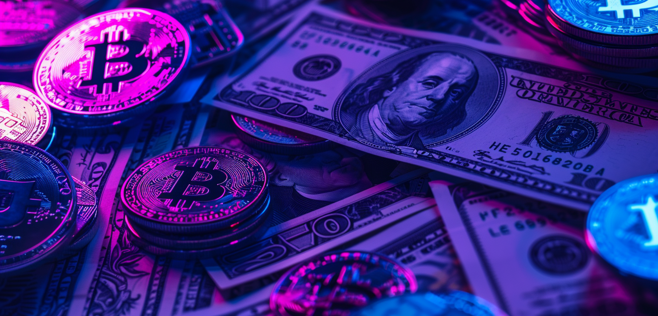
Understanding Crypto Farming
Crypto farming, commonly referred to as yield farming, is a practice within the decentralized finance (DeFi) sector where users lend or stake their cryptocurrency assets in various DeFi protocols to earn additional tokens as rewards. It is a way for investors to put their idle assets to work, generating passive income through interest or additional token incentives.
How Crypto Farming Works: Liquidity Provision, Staking, and Earning Rewards
- Liquidity Provision
In crypto farming, users provide liquidity to DeFi platforms by depositing their assets into liquidity pools. These pools are used to facilitate trading and lending activities within the DeFi ecosystem. In return for their contribution, liquidity providers receive a portion of the transaction fees generated by the pool, as well as additional token rewards from the protocol.
- Staking
Staking involves locking up a certain amount of cryptocurrency in a smart contract to support the operations of a blockchain network or DeFi protocol. By staking their tokens, users can earn rewards, typically in the form of additional tokens. Staking not only helps secure the network but also incentivizes participants to remain invested in the platform.
- Earning Rewards
The primary incentive for crypto farming is the earning of rewards, which can come in various forms such as interest, fees, or additional tokens. These rewards are distributed based on the amount of liquidity provided or the number of tokens staked. The reward structure varies across different DeFi platforms and can significantly impact the profitability of yield farming activities.
Key Players and Platforms in the Crypto Farming Space
Several key players and platforms have emerged as leaders in the crypto farming space, each offering unique opportunities and reward structures. Some of the notable platforms include:
- Uniswap
A popular decentralized exchange (DEX) that allows users to provide liquidity to various trading pairs and earn a share of the transaction fees.
- Compound
A DeFi protocol that enables users to lend and borrow cryptocurrencies, earning interest on their deposits.
- Aave
A decentralized lending platform where users can earn interest by providing liquidity or borrow assets against their crypto holdings.
- SushiSwap
A DEX similar to Uniswap, but with additional incentives for liquidity providers through its native SUSHI token.
- Yearn.finance
An automated yield optimization platform that helps users maximize their returns by automatically moving their funds between different yield farming opportunities.
By understanding the mechanics of crypto farming and the key players involved, investors can better navigate the DeFi landscape and make informed decisions about where to allocate their assets for optimal returns.

Token Inflation in Crypto Farming
Token inflation in crypto farming refers to the increase in the supply of tokens over time. This is a common mechanism in DeFi projects, where new tokens are minted and distributed as rewards to liquidity providers and stakers. The primary role of token inflation in crypto farming is to incentivize participation and liquidity provision. By offering new tokens as rewards, DeFi protocols attract more users to their platforms, ensuring adequate liquidity and operational stability.
Factors Contributing to Token Inflation in DeFi Projects
Several factors contribute to token inflation in DeFi projects:
- Reward Mechanisms
Most DeFi protocols reward users with newly minted tokens for providing liquidity or staking their assets. This continuous distribution of tokens increases the overall supply.
- Emission Schedules
DeFi projects often have predefined emission schedules that dictate the rate at which new tokens are minted. These schedules can vary widely, with some projects having high initial inflation rates that taper off over time.
- Governance Decisions
Token holders in some DAOs can vote to adjust the inflation rate based on the needs of the platform. This means that inflation can be dynamically managed to respond to market conditions and protocol requirements.
Impact of Token Inflation on Token Value and Investor Returns
Token inflation can have a significant impact on the value of tokens and the returns for investors:
- Dilution of Value
As more tokens are minted and enter circulation, the value of each individual token can decrease if demand does not keep pace with supply. This dilution effect can lead to a reduction in the market price of the token.
- Incentives and Returns
While inflation can lead to value dilution, the rewards distributed through inflation are intended to compensate for this. If the rewards are attractive enough, they can offset the effects of dilution and provide net positive returns to investors.
- Long-Term Sustainability
High rates of inflation can be unsustainable in the long term, leading to excessive dilution and potentially eroding investor confidence. Conversely, well-managed inflation can support healthy ecosystem growth and provide steady returns.
Understanding token inflation is crucial for investors in crypto farming, as it directly affects the potential profitability and sustainability of their investments. Balancing token rewards with inflationary impacts is key to maintaining the long-term viability of DeFi projects.
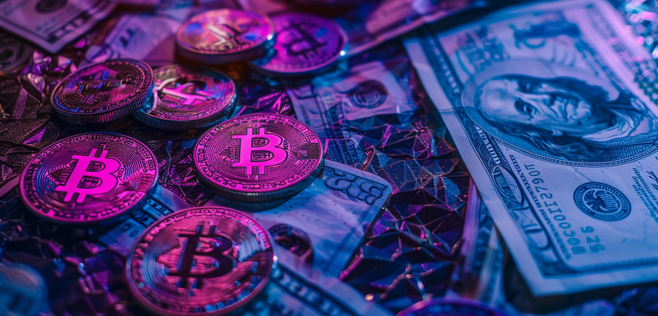
Supply Dynamics in Crypto Farming
In crypto farming projects, controlling and managing the token supply is crucial to maintaining the stability and value of the tokens. Various mechanisms are employed to regulate the token supply, ensuring that inflation does not devalue the tokens excessively and that there is a balanced supply-demand dynamic. These mechanisms include:
- Emission Schedules
Many DeFi projects have predefined emission schedules that dictate the rate at which new tokens are minted. These schedules often include a decreasing rate of token issuance over time to gradually reduce inflation.
- Governance Mechanisms
Some DAOs allow token holders to vote on changes to the emission rate and other supply-related parameters. This flexible approach enables the community to adapt the supply strategy to current market conditions.
- Staking Rewards and Penalties
Projects can adjust staking rewards and implement penalties for early withdrawal to influence the amount of tokens in circulation. Higher rewards encourage staking, effectively locking up tokens and reducing circulating supply.
The Role of Minting and Burning Tokens in Regulating Supply
Minting and burning tokens are two primary methods used by DeFi projects to regulate token supply:
- Minting Tokens
Minting is the process of creating new tokens. In crypto farming, new tokens are typically minted as rewards for liquidity providers and stakers. This increases the overall supply of tokens in circulation. Projects control the rate of minting through emission schedules and reward mechanisms.
- Burning Tokens
Burning is the process of permanently removing tokens from circulation by sending them to an irrecoverable address. This can help counteract inflation by reducing the total supply of tokens. Burning can be done through various mechanisms, such as buy-back-and-burn programs or by incorporating burning into transaction fees.
Examples of Projects with Effective Supply Management Strategies
Several DeFi projects have implemented effective supply management strategies to maintain a healthy token economy. Here are a few notable examples:
- Binance Smart Chain (BSC) - PancakeSwap (CAKE)
PancakeSwap employs both minting and burning mechanisms. CAKE tokens are minted as rewards for liquidity providers and stakers, while a portion of the transaction fees collected on the platform is used to buy back and burn CAKE tokens, helping to reduce inflation.
- Ethereum - MakerDAO (MKR)
MakerDAO uses a unique supply management strategy where MKR tokens are burned in proportion to the fees generated by the Maker Protocol. This mechanism helps to control the supply of MKR and maintain its value by reducing the total supply over time.
- Terra (LUNA)
Terra has an algorithmic approach to supply management. The protocol adjusts the supply of LUNA tokens based on the demand for Terra’s stablecoins. When demand for stablecoins increases, LUNA is burned to mint more stablecoins, and vice versa. This dynamic adjustment helps maintain stability and value in the Terra ecosystem.
By implementing these supply management strategies, DeFi projects can maintain a balanced token economy, ensuring that token supply aligns with demand and supports the long-term sustainability and value of the project.

Demand Drivers in Crypto Farming
Several factors drive the demand for tokens in crypto farming, contributing to their value and sustainability:
- Attractive Reward Programs
High returns on liquidity provision and staking can attract more participants, increasing demand for the tokens used in these programs.
- Market Perception and Trust
Positive sentiment and trust in the project can boost demand. Projects with a strong track record and transparent operations are more likely to attract investors.
- Partnerships and Integration
Collaborations with other projects or integrations with popular DeFi platforms can enhance a token's utility and increase its demand.
- Limited Supply and Deflationary Mechanisms
Tokens with a capped supply or deflationary mechanisms (like token burns) can create scarcity, driving demand as the token becomes more valuable over time.
The Importance of Utility and Use Cases for Maintaining Token Demand
The utility of a token plays a crucial role in maintaining its demand. Tokens with multiple use cases within their ecosystem are more likely to retain and grow their value. Important aspects of token utility include:
- Transactional Use
Tokens that are essential for transactions within the platform, such as paying fees or accessing services, tend to have higher demand.
- Governance
Tokens that grant voting rights on protocol changes and governance decisions can attract users who wish to have a say in the project's future.
- Incentives and Rewards
Tokens used for rewarding participants in the ecosystem, whether through staking, yield farming, or liquidity provision, maintain their demand by continuously engaging users.
- Interoperability
Tokens that can be used across multiple platforms or ecosystems tend to have higher demand due to their broader applicability.
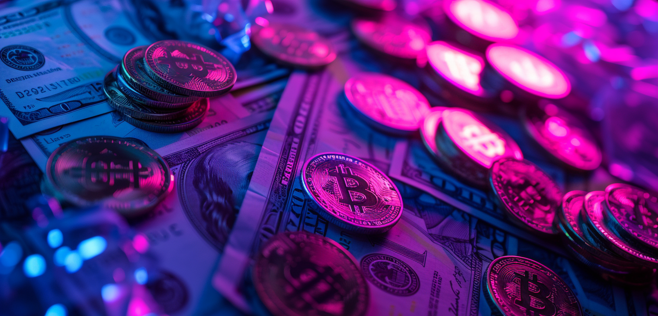
Case Studies of Successful Projects with High Token Demand
Examining successful projects can provide valuable insights into the factors that drive token demand in the crypto farming space. Here are three notable examples of projects that have effectively maintained high demand for their tokens through innovative strategies and robust utility.
Uniswap (UNI)
- Factors Driving Demand
Uniswap’s UNI token is in high demand due to its governance utility, allowing holders to vote on protocol changes and improvements. Additionally, Uniswap's popularity as a decentralized exchange (DEX) ensures continuous demand for UNI as part of its fee structure and reward system.
- Utility and Use Cases
UNI is used for governance, staking rewards, and liquidity mining, providing multiple use cases that sustain its demand.
Aave (AAVE)
- Factors Driving Demand
Aave's AAVE token is essential for governance and earning staking rewards. The platform's reputation for innovative lending and borrowing solutions boosts investor confidence and demand for AAVE.
- Utility and Use Cases:
AAVE tokens can be staked for security and governance, earning users a portion of the protocol's fees. This staking mechanism incentivizes holding AAVE, thus maintaining demand.
Chainlink (LINK)
- Factors Driving Demand
Chainlink’s LINK token is in high demand due to its critical role in facilitating smart contract operations by providing reliable off-chain data. The growing adoption of smart contracts across DeFi platforms drives continuous demand for LINK.
- Utility and Use Cases
LINK is used to pay node operators for data retrieval and delivery, acting as an essential part of Chainlink's decentralized oracle network. This unique utility ensures a consistent demand for LINK tokens.
By analyzing the factors that drive demand and the critical role of token utility, as well as exploring successful case studies, investors and developers gain valuable insights into the dynamics of crypto farming. This understanding helps in creating and maintaining token ecosystems that are not only sustainable but also attract and retain high demand over time.
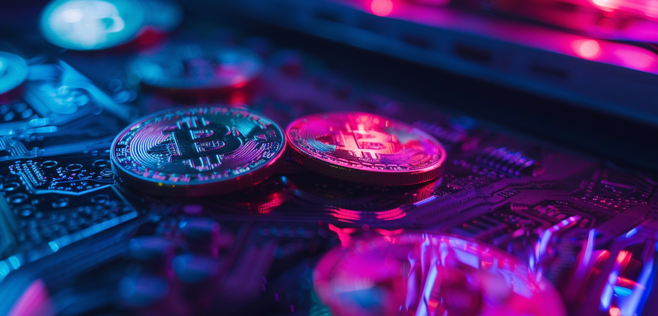
Balancing Token Inflation, Supply, and Demand
To ensure a stable and sustainable token economy, it is crucial to balance token inflation with supply and demand. Here are some strategies to achieve this balance:
- Controlled Emission Schedules
Implementing a controlled emission schedule can help manage the rate at which new tokens are minted. Gradually reducing token rewards over time can prevent excessive inflation.
- Token Buybacks and Burns
Projects can periodically buy back tokens from the market and burn them to reduce the circulating supply. This helps counteract inflation and supports token value.
- Dynamic Staking Rewards
Adjusting staking rewards based on market conditions can help balance supply and demand. Higher rewards during periods of low demand can incentivize participation, while lower rewards during high demand can prevent excessive inflation.
- Liquidity Mining Programs
These programs can be designed to encourage long-term participation rather than short-term gains. For example, implementing vesting periods for rewards can reduce the immediate impact on supply.
The Role of Tokenomics in Maintaining a Healthy Economic Model
Tokenomics, the economic model of a token, plays a vital role in maintaining a balanced and healthy ecosystem. Key aspects of tokenomics include:
- Utility and Use Cases
A well-designed tokenomics model ensures that the token has multiple use cases within the ecosystem, such as governance, transaction fees, staking, and accessing services. This creates ongoing demand and supports token value.
- Scarcity and Incentives
Balancing token supply through mechanisms like fixed supply caps, deflationary measures, and incentivized staking can create scarcity and drive demand.
- Transparent Governance
Involving the community in decision-making processes regarding tokenomics can enhance trust and support sustainable economic policies.
Best Practices for Sustainable Tokenomics in Crypto Farming Projects
Successful crypto farming projects adopt best practices in tokenomics to ensure long-term sustainability and value. Here are some recommended practices:
- Regular Audits and Assessments
Conducting regular audits and assessments of the tokenomics model helps identify potential issues and areas for improvement. Transparency in these audits builds trust within the community.
- Community Involvement
Engaging the community in governance and decision-making processes ensures that the interests of all stakeholders are considered, fostering a collaborative environment.
- Adaptive Policies
Implementing adaptive tokenomics policies that can respond to changing market conditions and project needs helps maintain a balanced token economy. This may include adjusting emission rates, modifying reward structures, or introducing new use cases for the token.
- Education and Communication
Educating the community about the tokenomics model and its benefits helps align expectations and promotes informed participation. Clear communication about changes and updates to the tokenomics policy builds transparency and trust.
By implementing these strategies and best practices, crypto farming projects can effectively balance token inflation, supply, and demand, ensuring a healthy and sustainable economic model that supports long-term growth and stability.
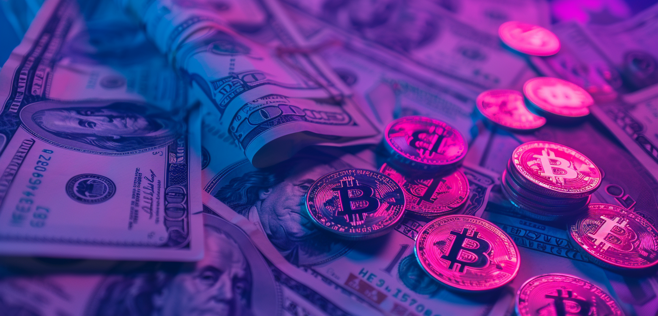
Challenges and Risks
Crypto farming projects face several challenges and risks related to managing token inflation, supply, and demand:
- Overinflation
Excessive token inflation can dilute the value of existing tokens, leading to decreased investor confidence and lower market prices. It can also create an unsustainable reward system, where the influx of new tokens exceeds the demand.
- Undersupply
An inadequate supply of tokens can hinder the growth and scalability of a project. It may lead to liquidity issues, making it difficult for users to trade or stake tokens effectively.
- Market Volatility
The cryptocurrency market is inherently volatile, and sudden changes in market conditions can significantly impact token supply and demand dynamics. This volatility can make it challenging to maintain a stable token economy.
- Regulatory Uncertainty
The evolving regulatory landscape poses risks to crypto farming projects. Changes in regulations can affect the legality and operational viability of tokenomics strategies, creating uncertainty for both developers and investors.
Potential Impacts of Overinflation or Undersupply on Project Sustainability
- Overinflation
If a project experiences overinflation, the increased token supply can lead to a sharp decline in token value. This devaluation can result in reduced incentives for liquidity providers and stakers, potentially causing a decline in participation and overall project activity. Long-term overinflation can erode trust and lead to the project's collapse.
- Undersupply
Conversely, an undersupply of tokens can create liquidity problems, making it difficult for users to trade or access services within the ecosystem. This scarcity can stifle growth, as new users may be unable to obtain the necessary tokens to participate. An undersupplied token economy may also lead to increased price volatility, further complicating the project's stability.
Risk Mitigation Strategies for Crypto Farming Projects
To address these challenges and mitigate risks, crypto farming projects can implement several strategies:
- Dynamic Reward Adjustments
Implementing dynamic reward systems that adjust based on market conditions can help manage token inflation. For example, decreasing rewards during periods of low demand and increasing them during high demand can balance supply and demand.
- Token Buybacks and Burns
Regular token buybacks and burns can help reduce excess supply and control inflation. By periodically removing tokens from circulation, projects can maintain a healthier token economy.
- Diversified Use Cases
Expanding the utility of tokens beyond simple staking and liquidity provision can drive continuous demand. This includes introducing governance roles, access to premium services, or integration with other DeFi platforms.
- Robust Governance Framework
Establishing a transparent and inclusive governance framework that involves community participation can enhance decision-making processes. This framework can help adapt to changing market conditions and regulatory environments more effectively.
- Regular Audits and Monitoring
Conducting regular audits of smart contracts and the overall tokenomics model can identify potential vulnerabilities and areas for improvement. Continuous monitoring of market trends and project performance can help anticipate and mitigate risks.
By proactively addressing these challenges and implementing effective risk mitigation strategies, crypto farming projects can enhance their resilience and ensure long-term sustainability. These efforts will help maintain a balanced token economy, fostering confidence among investors and participants.

Future Trends and Developments
As the DeFi ecosystem continues to evolve, several emerging trends are shaping the economics of crypto farming:
- Cross-Chain Yield Farming
With the growth of multiple blockchain networks, cross-chain yield farming is becoming increasingly popular. This allows users to farm yields across different blockchains, enhancing liquidity and creating more diverse investment opportunities.
- Layer 2 Solutions
The adoption of layer 2 scaling solutions, such as Optimistic Rollups and zk-Rollups, is improving the efficiency and scalability of DeFi platforms. These solutions reduce transaction costs and increase throughput, making crypto farming more accessible and cost-effective.
- Sustainable Farming Models
There is a growing focus on developing sustainable yield farming models that balance high rewards with long-term viability. Projects are increasingly emphasizing environmental, social, and governance (ESG) criteria to attract responsible investors.
Potential Innovations in Tokenomics and Supply Management
Innovations in tokenomics and supply management are critical to the future success of crypto farming. Potential innovations include:
- Algorithmic Supply Adjustments
Advanced algorithms can dynamically adjust token supply based on real-time market data and user activity. These algorithmic adjustments help maintain equilibrium between supply and demand, preventing overinflation or undersupply.
- Fractionalized Tokens
The introduction of fractionalized tokens allows for the division of large-value tokens into smaller, more accessible units. This innovation increases liquidity and participation by making high-value assets more attainable for smaller investors.
- Enhanced Reward Mechanisms
Innovative reward mechanisms, such as dynamic reward pools and multi-token rewards, can provide more tailored incentives for different types of participants. This approach encourages broader participation and engagement.
Predictions for the Future of Crypto Farming and Its Economic Impact
The future of crypto farming is poised for significant growth and transformation. Key predictions include:
- Increased Institutional Participation
As regulatory frameworks become clearer and DeFi platforms mature, more institutional investors are likely to enter the crypto farming space. This influx of capital will drive further innovation and stability in the market.
- Integration with Traditional Finance
The lines between DeFi and traditional finance are expected to blur, with more integrations and collaborations. This convergence will bring DeFi's benefits to a broader audience and enhance the overall financial ecosystem.
- Greater Focus on Security and Compliance
With the growing importance of DeFi, there will be an increased emphasis on security and regulatory compliance. Projects that prioritize these aspects will be more likely to succeed and gain trust from investors and regulators.
- Evolving Governance Models
Governance in DeFi will continue to evolve, with more sophisticated and inclusive models emerging. These models will leverage advanced voting mechanisms and decentralized decision-making processes to ensure fair and effective governance.
The economic impact of these developments will be profound, leading to a more inclusive, efficient, and resilient financial ecosystem. Crypto farming will play a pivotal role in this transformation, offering new opportunities for investors and redefining the dynamics of the global economy.
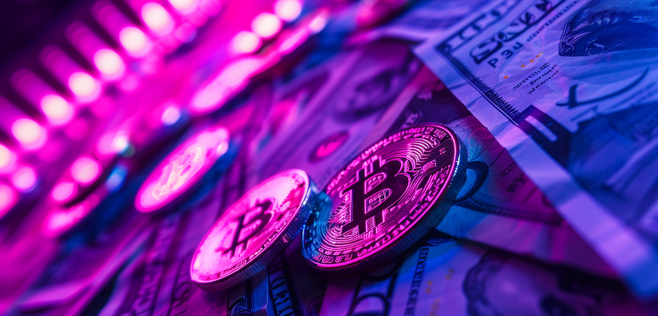
Conclusion
In this article, we have explored the critical economic factors of crypto farming, focusing on token inflation, supply, and demand. Understanding these elements is essential for maintaining a healthy and sustainable token economy. Token inflation needs to be carefully managed to prevent value dilution, while supply dynamics must be balanced to ensure adequate liquidity without creating scarcity issues. Demand drivers, including utility and use cases, play a pivotal role in sustaining token value and attracting ongoing participation.
Balanced tokenomics is crucial for the long-term sustainability of crypto farming projects. By implementing strategies such as controlled emission schedules, token buybacks and burns, dynamic reward adjustments, and diversified use cases, projects can create a stable and robust economic model. Effective governance and regular audits further support these efforts, ensuring transparency and community trust.
Looking ahead, the future of crypto farming holds exciting prospects, driven by emerging trends like cross-chain yield farming, layer 2 solutions, and sustainable farming models. Innovations in tokenomics and supply management, along with increased institutional participation and integration with traditional finance, will shape the next phase of DeFi growth. As the ecosystem evolves, a greater focus on security, compliance, and advanced governance models will be essential.
The economic implications of these developments are far-reaching, promising a more inclusive, efficient, and resilient financial landscape. By navigating the challenges and leveraging the opportunities, crypto farming can continue to redefine the global economy, offering new avenues for investment and financial innovation.

 Get RateX Pro
Get RateX Pro

 06 Jun 2024
06 Jun 2024


